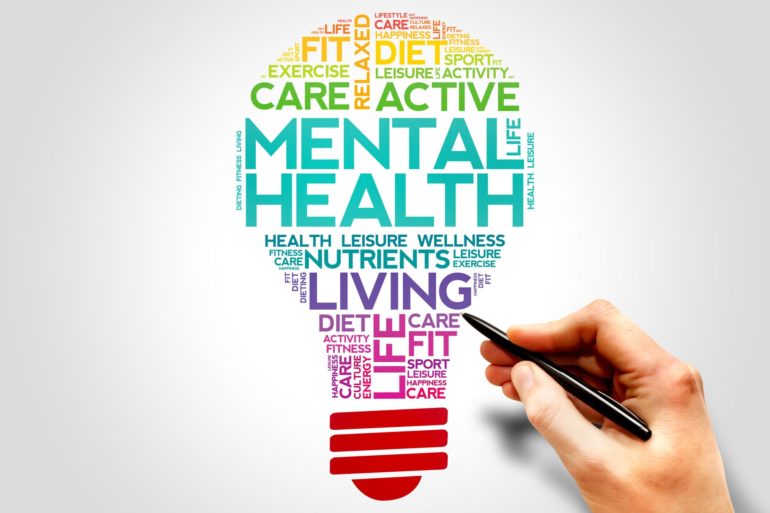
• Health department will pay providers for indirect services
By Aedan Hannon
Casper Star-Tribune
Via- Wyoming News Exchange
CASPER — Wyoming’s mental and behavioral health system was in need of a remake. Mental health providers saw it. Lawmakers saw it. Stefan Johansson, who would soon be appointed to lead the Wyoming Department of Health, saw it. People were slipping through the cracks.
Actually, they were falling. They were ending up in prisons, in hospitals, on waitlists for mental health facilities.
The problem lawmakers and the state identified was this: “When everyone is a priority, no one is a priority.”
A general access model for mental and behavioral health, in which everyone has equal access to state-supported services, was coming at the cost of those who needed the state’s help the most, according to a Department of Health report.
Lawmakers set out to spur reform and passed House Bill 38 in March 2021.
The bill kicked off the state’s“behavioral health redesign,”which has now been ongoing for two years and is nearing its July 2024 deadline.
“This is probably one of the most, if not the most, significant mental health efforts in the last two decades,”said Rep.Lloyd Larsen, R-Lander.
Now, the state’s behavioral health redesign is set to usher in another significant development: the funding of social determinants of health.
A new approach
As the Department of Health and the state roll out the redesign of mental and behavioral health, they will test paying community mental health centers to work with patients beyond direct care.
It’s a novel approach for a state that has historically focused on funding health care infrastructure and direct medical and mental health services.
“Social determinants of health” is the popular term for everything beyond medical care that influences people’s health. It covers where they live and work, where they are born and where they age.
Included under the umbrella are things like socioeconomic status, education and physical environment.
In recent decades, studies have increasingly shown that housing, food and employment insecurity all affect a person’s health and contribute to health disparities.
Drop out of high school? A shorter life expectancy and higher infant mortality rate for mothers. Live below the poverty line? Higher rates of activity-limiting chronic disease. The same is true for mental and behavioral health.
Those who are unemployed or precariously employed, or who have lower incomes, are likely to face more severe mental health challenges, research shows.
“You can just see it in the data, you can see it in the outcomes,” Johansson said.
The Department of Health has been weighing the idea of social determinants of health for years.
With a push from providers and growing support from lawmakers and state agencies, Wyoming’s behavioral health redesign offered an opportunity for the department to explore a new funding approach that takes into account those nonmedical factors.
The department is still working out the details, but it will pay community mental health centers for a range of services in addition to covering infrastructure and direct mental health care.
It could be connecting a patient to housing, a job or community volunteering. It could even be paying for rent.
As a part of this new approach, the agency is looking to build an incentive program that accounts for patient outcomes.
Take individuals who have been in the Wyoming State Hospital in Evanston. If a community mental health center can help them avoid returning to the hospital, helping them stay housed and in a job, the Department of Health would pay the provider.
The department would effectively reimburse the community mental health center for all of the work that they did to support those people and better their mental and behavioral health and their lives.
“Success is driving productive lives for them – independent lives – and managing behavioral health conditions in light of those independent lives,” Johansson said.
The department’s social determinants of health trial will start small as it tests the approach. It will look to use only a fraction of its roughly $48 million annual budget for community mental health and substance abuse, somewhere in the $5 million range, Johansson estimated.
The Department of Health will measure a number of metrics to see if the new funding approach is making a difference. The agency will use waitlist times for state institutions, court backlogs and recidivism rates, among others, to decide the success and future of the funding model.
“It will be small and it will be a select population,” Johansson said. “With this being so innovative, we do need to test this.”
The Department of Health will also study changes to the state’s community mental health system, such as how the providers change and scale their services to account for social determinants of health.
The agency is currently working with mental health providers to make sure that the new approach will not shock the state’s behavioral health system and affect its long-term financial sustainability, Johansson said.
If everything goes to plan, the trial will show that paying for social determinants of health improves the lives of patients, the work of community mental health centers and Wyoming’s mental and behavioral health system.
“Everybody wants the same thing, which is to help people get stable and then have productive and thriving lives,” Johansson said.
The redesign
Wyoming’s behavioral health redesign has made incremental but meaningful progress as it moves away from planning and toward action in its last 14 months.
The redesign was essentially an endeavor to redefine the state’s mission around mental and behavioral health. Central to the effort was the question that Larsen likes to ask, “What is the role of the state?”
House Bill 38 moved Wyoming away from a general access mental health system and toward one based on priority, though some mental health groups expressed reservations.
Lawmakers and state agencies identified a series of “priority populations” to focus state funding. Those priority populations included the following:
- people involved in the justice system
- high-risk families and children
- people with acute and severe mental illness and
- those unable to afford mental and behavioral health care.
In practice, the priority system means the state will devote its mental and behavioral health resources to helping those who need it most rather than spreading them across the general public.
Larsen and Johansson said that there was a recognition from lawmakers and the Department of Health that the state wasn’t serving those with more complex needs well; they decided to focus their attention on catching those who were falling through the cracks.
Identifying priority groups and then reworking the state’s behavioral health system has been a collaborative project, Larsen said. Alongside lawmakers and state agencies, judges, mental health providers, local governments and other health groups and advocates have offered input.
Until this year, the redesign has primarily revolved around planning. Throughout 2021 and 2022, the Department of Health held regular day-long meetings that covered everything from eligibility to how people will transition from mental health facilities to local providers.
The group produced a September 2021 report that outlined the direction and goals for the redesign. It included a recommendation for outcome-based payments, which formed the basis for the Department of Health’s move to begin paying for social determinants of health.
With next year’s deadline nearing, the Department of Health has pivoted to putting the redesign into action. That has meant working with mental health providers to determine how the department will structure incentive payments and formulating new technology to better track outcome data for people the state serves, Johansson said.
“At the end of the day, I think everybody is comfortable with where we’re at,” Larsen said.
But when the deadline hits, Wyoming will not have the model behavioral health system that some might expect or crave. Working through the redesign has continually revealed new gaps in the state’s behavioral health system.
“Each time we take another step forward in building up the walls on the foundation of this whole mental health system we’re identifying other gaps in the system that we need to correct,” Larsen said.
For Larsen, that has been part of the value of the redesign. It has been a means of refining behavioral health for the groups Wyoming has chosen to prioritize in its new mission. And, as the redesign moves toward its final steps, that will continue to be the case.
“We can’t turn this ship on a dime,” he said.





